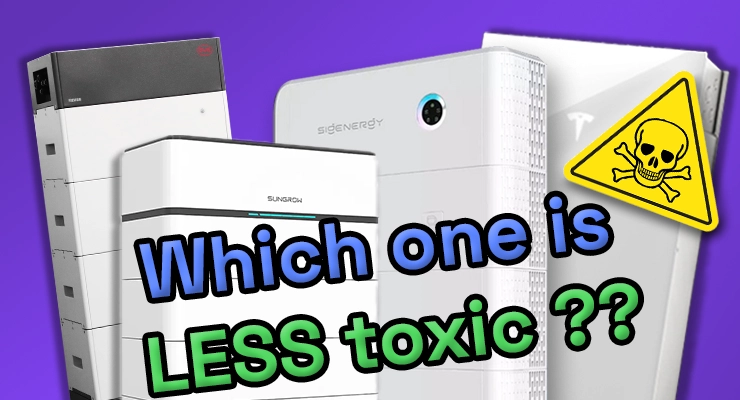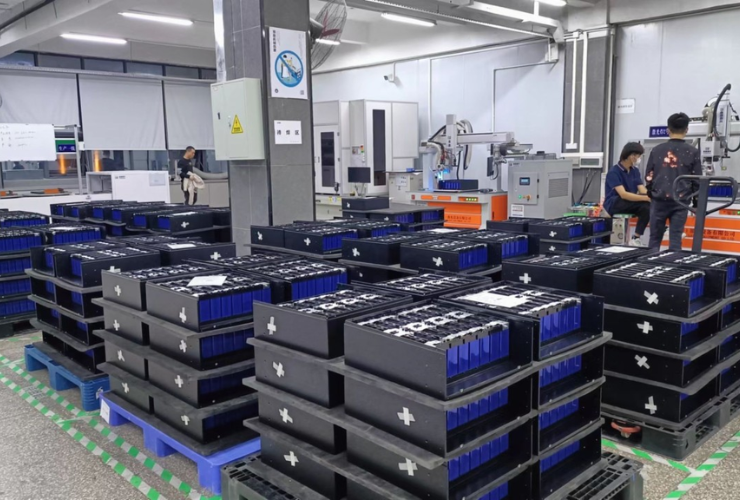Fast read
Yes, there are home battery options that use less toxic and more abundant materials than traditional lithium-ion chemistries. Lithium Iron Phosphate (LFP) batteries are a popular choice as they are cobalt-free, making them safer and less toxic. Emerging technologies like sodium-ion batteries, which use highly abundant and non-toxic sodium, are also becoming available in Australia and represent a very sustainable long-term option.
Are there battery options that use less toxic materials?
As Australians embrace renewable energy, the question of what’s inside our solar batteries is becoming more important. Homeowners are increasingly looking for energy storage solutions that are not only efficient and affordable but also safe and environmentally responsible. The good news is that the industry is evolving, and there are now excellent options available that move away from materials linked to environmental and ethical concerns.
Understanding material concerns in common batteries
For years, the dominant lithium-ion battery chemistries, like Nickel Manganese Cobalt (NMC), have raised valid questions. These batteries rely on materials like cobalt and nickel, the mining of which can be associated with significant environmental degradation and social issues. While powerful, the presence of these materials, along with flammable electrolytes, also contributes to a higher risk of thermal runaway—a dangerous overheating event—if the battery is damaged or faulty.
This has driven significant innovation toward chemistries that are inherently safer and more sustainable, giving homeowners peace of mind and better choices.
Lithium Iron Phosphate (LFP): The safer, cobalt-free choice
One of the most significant developments in residential energy storage is the widespread adoption of the Lithium Iron Phosphate (LFP) battery. This chemistry is a type of lithium-ion battery, but it uses iron phosphate for its cathode material, completely eliminating the need for cobalt.
This change has several key benefits for Australian homeowners:
- Enhanced safety: LFP batteries have a much more stable chemical structure, making them far less prone to overheating and thermal runaway, which significantly reduces fire risk.
- Longer lifespan: They are known for their durability and can typically endure thousands more charge and discharge cycles than other lithium-ion types, offering excellent long-term value.
- Reduced environmental impact: By using iron and phosphate—two of the most abundant and non-toxic minerals on earth—LFP batteries avoid the environmental and supply chain issues tied to cobalt.
Due to their stability and safety, LFP batteries have become a trusted and popular choice for home energy storage across Australia.
Sodium-ion batteries: The emerging sustainable powerhouse
An exciting technology now entering the Australian residential market is the sodium-ion (Na-ion) battery. These batteries operate on principles similar to lithium-ion but use sodium—an element that is over 1,000 times more abundant than lithium and can be sourced from seawater—as their primary charge carrier.
The advantages of sodium-ion technology are compelling:
- Superior safety: Sodium-ion chemistry is non-flammable and has a very low risk of thermal runaway, making it one of the safest options for home installation.
- Excellent sustainability: Relying on abundant, inexpensive, and non-toxic materials, sodium-ion batteries have a significantly lower environmental footprint.
- Wide operating temperatures: They perform reliably in a broad range of temperatures, making them well-suited to Australia’s diverse climates.
Several manufacturers are beginning to offer sodium-ion batteries for residential use in Australia, with some products expected to be available from 2025. While the technology currently has a slightly lower energy density than lithium-ion, its exceptional safety and sustainability make it a strong contender for the future of home energy storage. As an example of this emerging market, some Australian suppliers are already taking pre-orders for 10kWh sodium-ion systems intended for off-grid applications.
What about recycling and end-of-life?
Regardless of the chemistry, responsible disposal and recycling are crucial for minimising the environmental impact of any battery. When a battery reaches the end of its life, its materials can be recovered and reused, contributing to a circular economy.
Australia is developing its own onshore battery recycling capabilities to handle the growing volume of end-of-life batteries from solar installations and electric vehicles. Facilities use processes like hydrometallurgy (liquid-based leaching) and pyrometallurgy (high-temperature smelting) to safely separate and recover valuable materials like copper, aluminium, steel, and the active ingredients of the battery chemistry for reuse in new products. Choosing a battery technology made from less toxic and more common materials can make this recycling process simpler and safer.
How to make a sustainable battery choice
When considering a battery for your home, thinking about the materials inside is a smart move. LFP batteries already offer a fantastic, widely available balance of safety, performance, and reduced toxicity. For those prioritising sustainability and the latest in safety, the new generation of sodium-ion batteries presents a compelling vision for the future of home energy.
Always speak with a Clean Energy Council (CEC) accredited installer who can provide the latest information on approved battery systems in Australia. They can help you compare the pros and cons of different technologies and select a solution that aligns with your energy needs, budget, and environmental values. If you’re looking for guidance, Your Energy Answers can connect you with accredited local experts to help you make a confident and informed decision.




